
VAL - Paths and Aspects of Tomorrow - Exhibition at the SNR
Source
Galéria Slovenského rozhlasu
Galéria Slovenského rozhlasu
Publisher
Tisková zpráva
17.06.2024 07:40
Tisková zpráva
17.06.2024 07:40
Exhibitions
Slovakia
Bratislava
Viera Mecková
Ľudovít Kupkovič
Alex Mlynárčik
Skupina VAL
The projects of the prospective architecture of the VAL association are an expression of the self-confidence of modern art to transcend given limits. At the same time, they also serve as a space for communication between and against the hermetically closed art for elites. These visionary projects were not created on commission; they emerged without assignments and without the prospect of realization. Members of VAL, Viera Mecková, Alex Mlynárčik, and Ľudovít Kupkovič, understood them as a synthesis of science, technology, art, and nature. They also drew from the principle of appropriating reality and demystifying art. It was a desire to find one’s own free world. The projects also stem from a different spatial and temporal perception of reality.
The collaboration among VAL authors began in 1968, during the invasion of Soviet and other "brotherly" troops into what was then Czechoslovakia; it continued through many years of normalization until 1989 and concluded in 1994 in a changed social situation. During the period of normalization, it was also an escape from the constricted reality of the prevailing socialist realism and the practical impossibility of free creation and presentation of works without inspections from art and culture commissions supplied by the Soviet brotherhood.
The projects of the VAL association were incredibly ahead of their time. Of course, the spirit of new realism was also present in them. The authors (thankfully) imposed no limitations and also brought the vision of a better world. A certain precursor can be seen in the Superlund exhibition about the future of the world and the function of art, held in 1967 in the Swedish city of Lund. Pierre Restany characterized it with the words: “BET ON THE FUTURE. WE WILL WIN IT, OR WE WILL LOSE TOGETHER!" It is about returning humanity to the “image,” which continuously grows in spatial - plastic dimensions, to the point where in its current state the “image” becomes a synthesis of the movement of the structure of human existence. The first VAL exhibition was held secretly in Paris in 1977 at the Lara Vincy gallery with the help of friends from the Žilina puppet theater, who transported three VAL projects across the border along with the scenery. In former Czechoslovakia, the first exhibition took place only in 1996 at the Umelecká beseda in Bratislava, but it did not meet with an adequate response; a broader discussion was lacking. This sparked only at the exhibition in Venice in 1999. The first project is HELIOPOLIS (1968 - 1974), an Olympic city in the Tatras, which significantly outpaced its time - now the times are catching up with their visions, and concepts not too different from their designs are being realized, such as a 120 km long and 487 meters high building intended for 5 million inhabitants in the Saudi Arabian futuristic city of Neom. HELIOPOLIS, with a residential area of 3,910,000 m2 and an entire air-conditioned super zone, with zones for sports fields, winter and summer tourism, or quiet zones with strict reservations for Tatra flora and fauna, is its long-standing precursor. Of course, all this also involves the use of solar energy. According to the authors of the Heliopolis study, “it is not a utopia, but a search for a synthesis between human possibilities and demands.” The kinetic concert hall dedicated to the memory of Miroslav Filip, AKUSTICON (1969 - 1971), is a monumental playing sculpture where visitors create music through their movements. Alex Mlynárčik also created its one-quarter functioning model - its realization at a proposed height of 18 m and with a maximum diameter of 13 m is no longer an issue of available technologies but just about finances. HONOR TO HOPE AND COURAGE (1974 - 1975) was created in honor of the astronaut with Slovak roots E.A. Cernan. The SCARABEA project (1985 - 1989) represents an orbital space station for 12,000 inhabitants, moving along its own orbit with a cylinder diameter of 3,000 m. The realization of a similar project is not too far in the future. Similarly, the implementation of the city ISTROPORT (1974 - 1976) with 120,000 inhabitants, which would be located directly on the Danube in Bratislava, is no longer unimaginable today. The work ANTARCTICA (1982), dedicated to the courage of searching, represents the New Zealand Scott base with a 25 m tall monument. The World Parliament - NATIONAL ASSEMBLY OF ARGÍLLIA (1980 - 1994) would be located in a building on the island of Bora Bora near Tahiti and its goal would be “to eliminate conflicts and reconcile people.” The last project is E-TEMEN-AN-KI - SHERATON HOTEL BABYLON (1980 - 1994) with a citation from Breughel's painting The Tower of Babel.
All the projects are thoroughly and carefully worked out, reflecting the hand and spirit of the artist and architects; we find in them urban studies, viewpoints from various angles, floor plans, sections, systems of transportation and technical devices, citations of artifacts from the past, such as the painting by Pieter Bruegel the Elder, the wing by Leonardo da Vinci, the work of Hieronymus Bosch, Constantin Brancusi's egg, photographs from the last lunar landing of Apollo 17 captain E.A. Cernan, etc.
The VAL projects significantly ahead of their time, and I am convinced that they have not yet been properly appreciated. We are pleased to present them at the Gallery of the Slovak Radio. We believe that they will garner the deserved attention, and we look forward to being able to reprise them at the Kolektiv 318 gallery in Marseille, which has spaces in a building designed by Le Corbusier.
1) Claude-Nicolas Ledoux (March 21, 1736, Dormans sur Marne - November 18, 1806, Paris), French architect, urban planner, theorist, representative of French classicism. Among other things, he designed the House of the Field Guard in Maupertuis, which is utilized in the design of the National Assembly. The majority of his utopian projects were not realized, and several modernists of the 20th century built upon his work.
Gallery of the Slovak Radio
The building of the Slovak Radio was designed by Štefan Svetko in collaboration with Štefan Ďurkovič and Barnabáš Kissling. It was completed in 1983 and regular broadcasting began on March 27, 1985. The building received the title of Building of the Century in Slovakia in the category of social buildings, and in December 2017 it was declared a National Cultural Monument of the Slovak Republic. On its ground floor is a generously conceived Slovak Radio Gallery.
The first significant exhibition held here was titled New Slovak Image and took place during the Days of New Slovak Music in 1988. The exhibition, conceived by Zuzana Bartošová, presented several artists from the unofficial art scene. The same year, there was also an exhibition titled Slovak Photography of the 1980s, selected by Aurel Hrabušický and Václav Macek. Several quality exhibitions followed in the ensuing years as part of the Month of Photography: World Press Photo 1993 (1993), British Documentary Photography 1983 - 1993 (1994), Image and Sign (1997), Contemporary Latvian Photography (1998), Ian Patrick: Diary of an Extraterrestrial (1999), and Slovak Graduates of FAMU (2000). In 1990, during the festival New Slovak Music, the gallery organized an exhibition titled Interpretations and Reinterpretations, which was prepared by Jana Geržová based on long-term research. On the occasion of the 80th anniversary of the establishment of the Slovak Radio, an exhibition of sculptors from the collections of the Slovak National Gallery was held in 2006, conceived by Katarína Bajcurová, presenting works by Jozef Kostka, Rudolf Uhr, Jozef Jankovič, Vladimír Kompánek, and Juraj Meliš. After the installation of a permanent exhibition on the history of broadcasting, however, there was a relatively long period during which the connection between museum and gallery exhibitions was not very successful. The quality of exhibitions varied greatly, and there was no archival documentation kept about them. And yet, the possibilities! A beautiful exhibition space of over 1,350 square meters, a connection with concert halls, promotion by radio and television editors... We would like to utilize this great potential and enrich the exhibition program with quality titles that will attract lovers of good art and secure its high reputation.
Part of the educational function of the gallery is the systematic development of programs through discussions about art, lectures, guided tours, workshops, and hands-on activities aimed at families, schools, educators, adults, seniors, and specific groups of visitors and guests not just from Bratislava. Last but not least, the gallery aims to serve the employees of the Slovak Radio and Television with its expanded exhibition and educational offerings. The gallery plans to engage surrounding local communities and the urbanism of the city, which the pyramid dominates and determines its unique genius loci, therefore in addition to activities related to individual exhibitions, it will also include programs dedicated to the building itself.
In the spirit of the timeless idea of Štefan Svetko, upon entering the building, we find ourselves in an artistic piece with its own microcosm. He himself symbolically compared it to a small Guggenheim Museum, a center intended for the synthesis of various types of art, and our effort is to contribute to fulfilling this vision.
The collaboration among VAL authors began in 1968, during the invasion of Soviet and other "brotherly" troops into what was then Czechoslovakia; it continued through many years of normalization until 1989 and concluded in 1994 in a changed social situation. During the period of normalization, it was also an escape from the constricted reality of the prevailing socialist realism and the practical impossibility of free creation and presentation of works without inspections from art and culture commissions supplied by the Soviet brotherhood.
The projects of the VAL association were incredibly ahead of their time. Of course, the spirit of new realism was also present in them. The authors (thankfully) imposed no limitations and also brought the vision of a better world. A certain precursor can be seen in the Superlund exhibition about the future of the world and the function of art, held in 1967 in the Swedish city of Lund. Pierre Restany characterized it with the words: “BET ON THE FUTURE. WE WILL WIN IT, OR WE WILL LOSE TOGETHER!" It is about returning humanity to the “image,” which continuously grows in spatial - plastic dimensions, to the point where in its current state the “image” becomes a synthesis of the movement of the structure of human existence. The first VAL exhibition was held secretly in Paris in 1977 at the Lara Vincy gallery with the help of friends from the Žilina puppet theater, who transported three VAL projects across the border along with the scenery. In former Czechoslovakia, the first exhibition took place only in 1996 at the Umelecká beseda in Bratislava, but it did not meet with an adequate response; a broader discussion was lacking. This sparked only at the exhibition in Venice in 1999. The first project is HELIOPOLIS (1968 - 1974), an Olympic city in the Tatras, which significantly outpaced its time - now the times are catching up with their visions, and concepts not too different from their designs are being realized, such as a 120 km long and 487 meters high building intended for 5 million inhabitants in the Saudi Arabian futuristic city of Neom. HELIOPOLIS, with a residential area of 3,910,000 m2 and an entire air-conditioned super zone, with zones for sports fields, winter and summer tourism, or quiet zones with strict reservations for Tatra flora and fauna, is its long-standing precursor. Of course, all this also involves the use of solar energy. According to the authors of the Heliopolis study, “it is not a utopia, but a search for a synthesis between human possibilities and demands.” The kinetic concert hall dedicated to the memory of Miroslav Filip, AKUSTICON (1969 - 1971), is a monumental playing sculpture where visitors create music through their movements. Alex Mlynárčik also created its one-quarter functioning model - its realization at a proposed height of 18 m and with a maximum diameter of 13 m is no longer an issue of available technologies but just about finances. HONOR TO HOPE AND COURAGE (1974 - 1975) was created in honor of the astronaut with Slovak roots E.A. Cernan. The SCARABEA project (1985 - 1989) represents an orbital space station for 12,000 inhabitants, moving along its own orbit with a cylinder diameter of 3,000 m. The realization of a similar project is not too far in the future. Similarly, the implementation of the city ISTROPORT (1974 - 1976) with 120,000 inhabitants, which would be located directly on the Danube in Bratislava, is no longer unimaginable today. The work ANTARCTICA (1982), dedicated to the courage of searching, represents the New Zealand Scott base with a 25 m tall monument. The World Parliament - NATIONAL ASSEMBLY OF ARGÍLLIA (1980 - 1994) would be located in a building on the island of Bora Bora near Tahiti and its goal would be “to eliminate conflicts and reconcile people.” The last project is E-TEMEN-AN-KI - SHERATON HOTEL BABYLON (1980 - 1994) with a citation from Breughel's painting The Tower of Babel.
All the projects are thoroughly and carefully worked out, reflecting the hand and spirit of the artist and architects; we find in them urban studies, viewpoints from various angles, floor plans, sections, systems of transportation and technical devices, citations of artifacts from the past, such as the painting by Pieter Bruegel the Elder, the wing by Leonardo da Vinci, the work of Hieronymus Bosch, Constantin Brancusi's egg, photographs from the last lunar landing of Apollo 17 captain E.A. Cernan, etc.
The VAL projects significantly ahead of their time, and I am convinced that they have not yet been properly appreciated. We are pleased to present them at the Gallery of the Slovak Radio. We believe that they will garner the deserved attention, and we look forward to being able to reprise them at the Kolektiv 318 gallery in Marseille, which has spaces in a building designed by Le Corbusier.
Ivan Jančár, 2023
1) Claude-Nicolas Ledoux (March 21, 1736, Dormans sur Marne - November 18, 1806, Paris), French architect, urban planner, theorist, representative of French classicism. Among other things, he designed the House of the Field Guard in Maupertuis, which is utilized in the design of the National Assembly. The majority of his utopian projects were not realized, and several modernists of the 20th century built upon his work.
Gallery of the Slovak Radio
The building of the Slovak Radio was designed by Štefan Svetko in collaboration with Štefan Ďurkovič and Barnabáš Kissling. It was completed in 1983 and regular broadcasting began on March 27, 1985. The building received the title of Building of the Century in Slovakia in the category of social buildings, and in December 2017 it was declared a National Cultural Monument of the Slovak Republic. On its ground floor is a generously conceived Slovak Radio Gallery.
The first significant exhibition held here was titled New Slovak Image and took place during the Days of New Slovak Music in 1988. The exhibition, conceived by Zuzana Bartošová, presented several artists from the unofficial art scene. The same year, there was also an exhibition titled Slovak Photography of the 1980s, selected by Aurel Hrabušický and Václav Macek. Several quality exhibitions followed in the ensuing years as part of the Month of Photography: World Press Photo 1993 (1993), British Documentary Photography 1983 - 1993 (1994), Image and Sign (1997), Contemporary Latvian Photography (1998), Ian Patrick: Diary of an Extraterrestrial (1999), and Slovak Graduates of FAMU (2000). In 1990, during the festival New Slovak Music, the gallery organized an exhibition titled Interpretations and Reinterpretations, which was prepared by Jana Geržová based on long-term research. On the occasion of the 80th anniversary of the establishment of the Slovak Radio, an exhibition of sculptors from the collections of the Slovak National Gallery was held in 2006, conceived by Katarína Bajcurová, presenting works by Jozef Kostka, Rudolf Uhr, Jozef Jankovič, Vladimír Kompánek, and Juraj Meliš. After the installation of a permanent exhibition on the history of broadcasting, however, there was a relatively long period during which the connection between museum and gallery exhibitions was not very successful. The quality of exhibitions varied greatly, and there was no archival documentation kept about them. And yet, the possibilities! A beautiful exhibition space of over 1,350 square meters, a connection with concert halls, promotion by radio and television editors... We would like to utilize this great potential and enrich the exhibition program with quality titles that will attract lovers of good art and secure its high reputation.
Part of the educational function of the gallery is the systematic development of programs through discussions about art, lectures, guided tours, workshops, and hands-on activities aimed at families, schools, educators, adults, seniors, and specific groups of visitors and guests not just from Bratislava. Last but not least, the gallery aims to serve the employees of the Slovak Radio and Television with its expanded exhibition and educational offerings. The gallery plans to engage surrounding local communities and the urbanism of the city, which the pyramid dominates and determines its unique genius loci, therefore in addition to activities related to individual exhibitions, it will also include programs dedicated to the building itself.
In the spirit of the timeless idea of Štefan Svetko, upon entering the building, we find ourselves in an artistic piece with its own microcosm. He himself symbolically compared it to a small Guggenheim Museum, a center intended for the synthesis of various types of art, and our effort is to contribute to fulfilling this vision.
PhDr. Ivan Jančár Project Manager Gallery of the Slovak Radio
Mgr. Daniela Čarná, PhD. Gallery Educator Gallery of the Slovak Radio
The English translation is powered by AI tool. Switch to Czech to view the original text source.
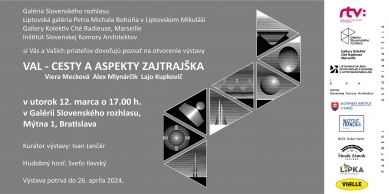
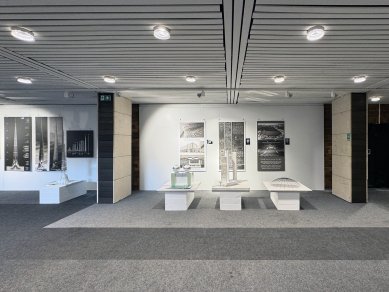
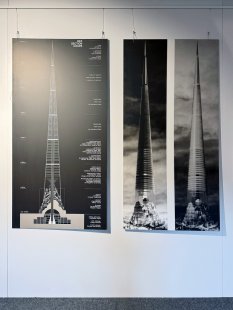
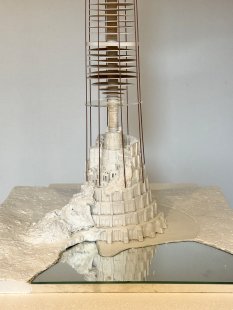
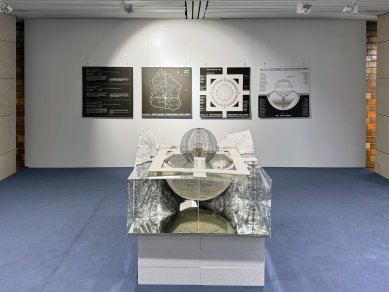
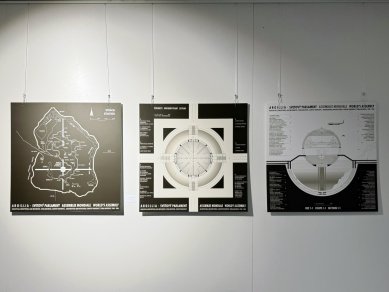
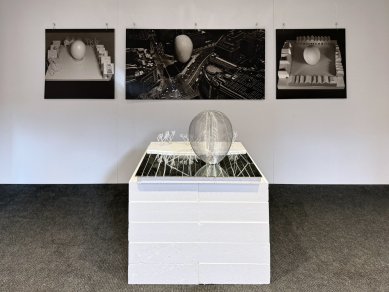
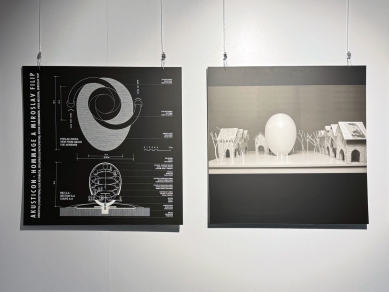
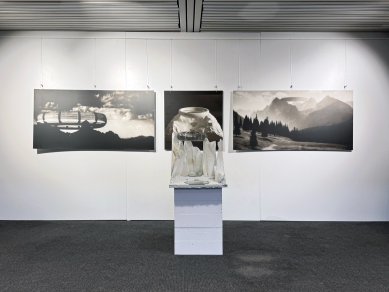
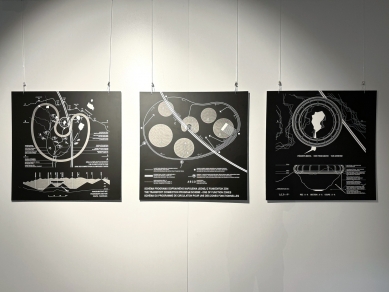
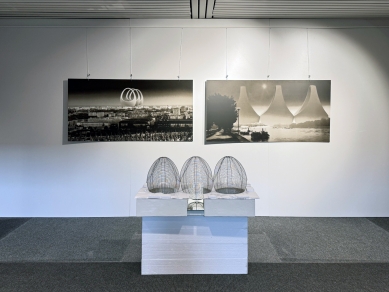
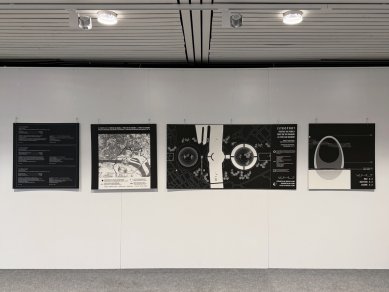
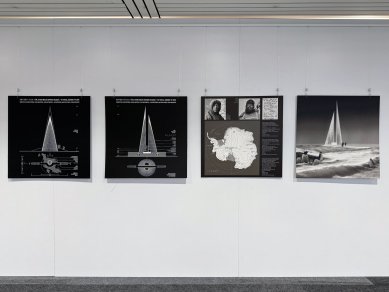
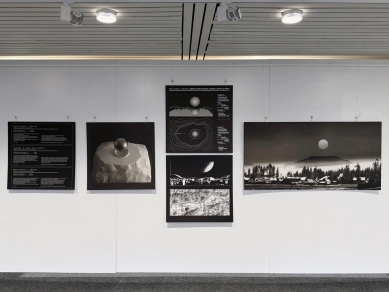
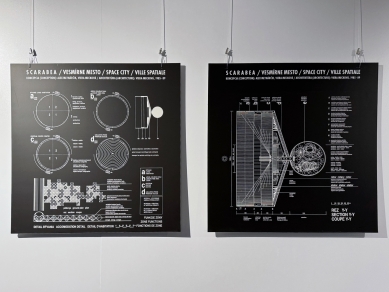
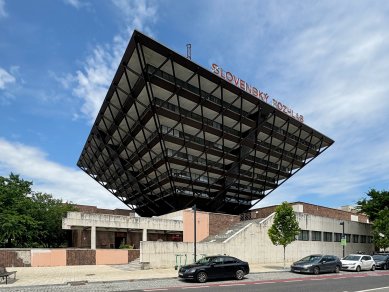
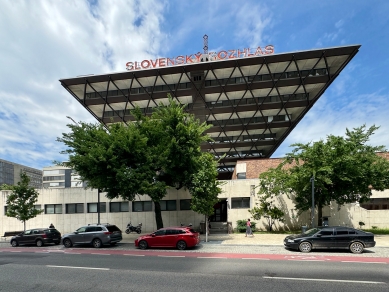
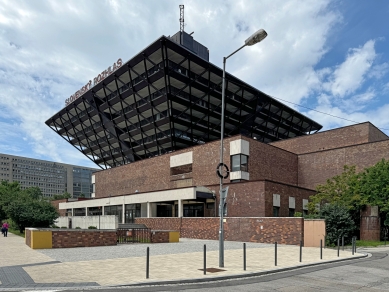
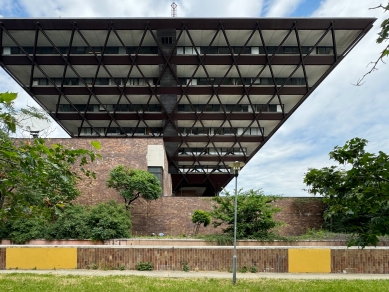
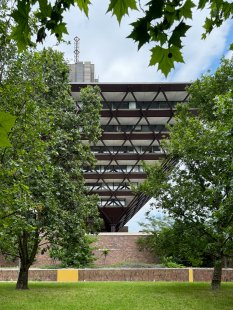
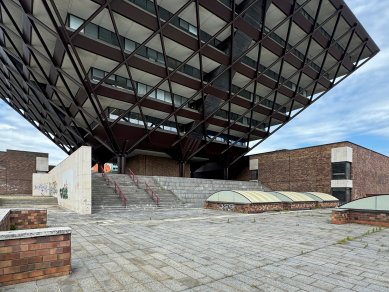
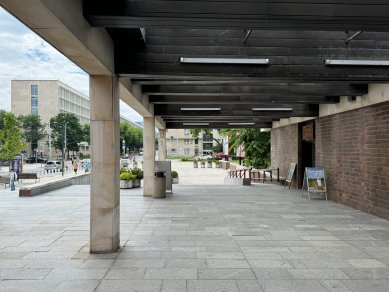
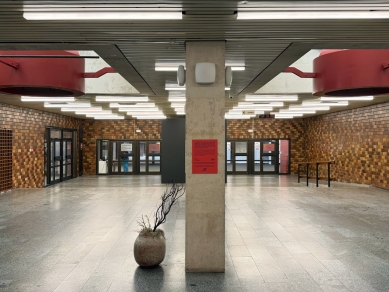
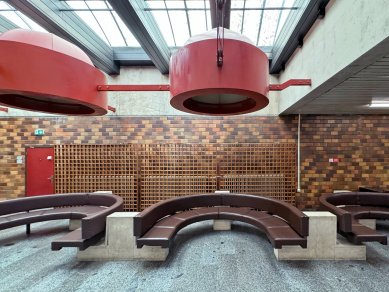
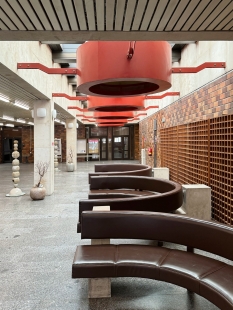
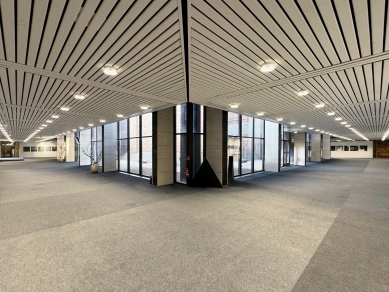
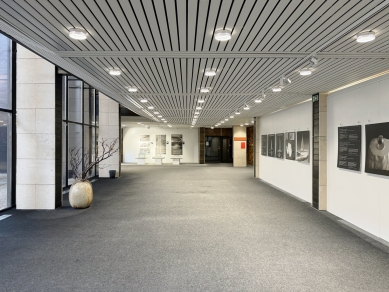
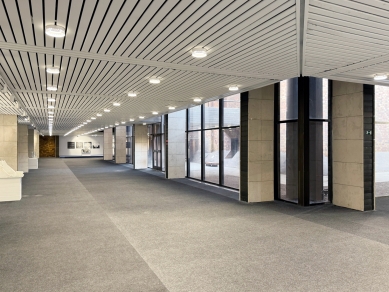
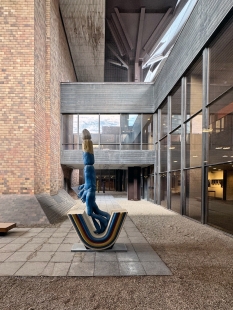
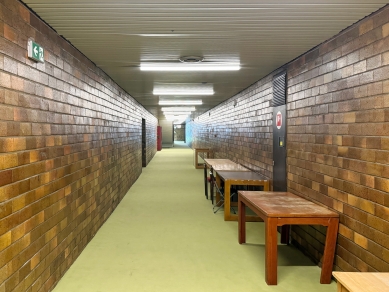
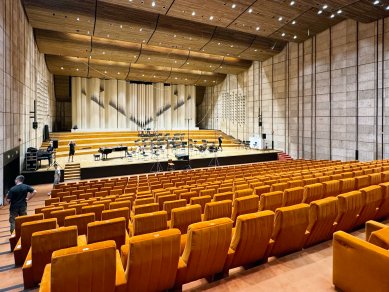
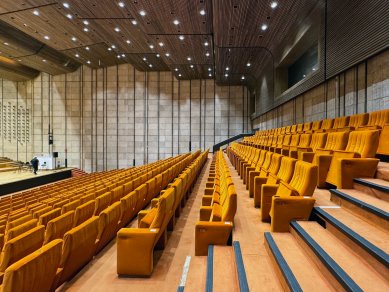
0 comments
add comment











